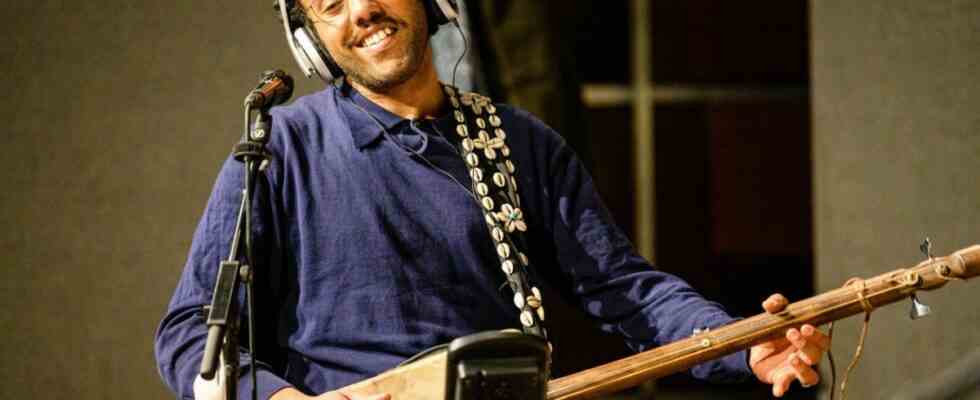Marwan Fakir’s violin calls and listens to the reverberation of its tones, gliding into the microtones with a fine sense for elegant movements, which Western pop music only knows rudimentarily with the blue notes of the blues. It lasts two minutes, then the first number “L’ar ya l’ar” picks up speed to the rhythm of the tambourine, becomes a dance, a call-and-response number, led by Mohcine Ramdan’s voice. From a European perspective, this Chaabi-style piece is what is commonly thought of as Arabic music.
“Heritage / Irth” have Jisr, who came together in Munich, called their second album. They recorded it during the lockdown in Studio 2 of Bayerischer Rundfunk. In 2016, Ramdan founded Jisr with two Syrian refugees. He himself is Moroccan, studied German in Rabat and then continued in Munich. In the meantime, he has received his doctorate, has just published his dissertation and has turned his group into an amazingly versatile organism that is constantly rearranging the cultural backgrounds of its members. On the cover you can see him sitting on a moped – against the backdrop of Djemaa el-Fna, Marrakech’s central square, where life pulsates at night and where snake charmers like to follow you during the day. Dangling on Mohcine Ramdan’s back is a gimbri, a Gnawa bass lute and ritual instrument.
Roman Bunka, who died in June, can be heard again here
Of course, Mohcine Ramdan could start his moped and drive off at any time. In one direction, after a few meters, he would disappear into the alleys of the souk, where every tourist gets lost at least once, overwhelmed by the concentration of life to a critical mass. In the other direction he would be on his way to the Atlas Mountains in no time, past Berber villages.
The second song gets in your bones with a bright trilling female voice. Zaghrouta is the name of the singing technique in the Arab world, while we call it ululation. Yodels would be amazed. It goes into the desert with “Hasna w ya Layla” and a rhythmic-melodic rocking, which is actually not dissimilar to the feeling of the Delta Blues. Roman Bunka, who can usually be heard playing the oud on the album, has one of his last appearances on the guitar here. On June 12th the great music lover died embryo accompanied her on her great journey.
Devoting itself entirely to the musical richness of Morocco, this Jisr album is not a museum. Even if the gimbri intro of “Soudani Manayou” goes deep into the hypnotic ritual music of the Gnawa, even if Bunka’s Oud has such an incredibly perfectly shimmering beauty in itself, even if percussionist Rhani Krija has a typical metallic sound in “Hobek Leqmar”. shakes out of his fingers.
Jisr don’t exhibit all this, they draw it out of themselves. “Longa Nekriz” is their version of classical Arabic music. And without a doubt, one accepts that the vibraphone opens the space here, an instrument with only a hundred years of history. Played by Marja Burchard, head of Embryo and music socialized with non-European sounds since childhood. The fact that Vlad Cojacaru paints the harmony space with the accordion is just the organic continuation, just like Gergely Lukác’s trumpet and flugelhorn.
It is no coincidence that in “Hobek Leqmar” Ramdan’s voice suddenly seems to flutter melismatically in the direction of flamenco. The connections to Andalusia are not only close musically. Expelled from Spain, Sephardic Jews also brought their culture to Morocco – and even without a moped, Ramdan would quickly be in the Jewish quarter of Marrakech.

